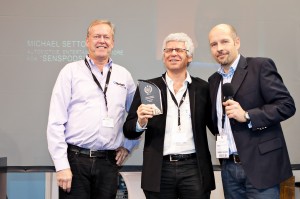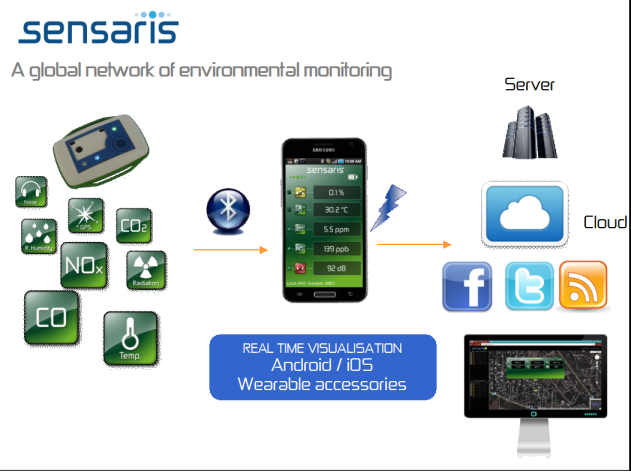Using Senspods, it is now easier than ever to check indoor environmental quality.
The new Senspods were developed and trialed through a grant from the Eco Energies Innov funding program Eco Innov focusing on home energy savings.
Studies at Coventry University clearly showed that monitoring CO2, temperature, humidity and amount of light is also useful for home energy profiling and to better understand where gains can be made towards passive homes.( Coventry Passive Homes ).
The data can be visualized in real time using mobile phones or data sent to the cloud can be to compare the environmental quality of different homes.
Public building requirements: New focus on schools and day care centers in France.
In France , a new requirement for day care centers came into effect on July 1 st 2012 and requires all buildings to characterize VOCs (formaldehyde and benzene) and CO2. Carbon dioxide has no effect on health but it is an excellent indicator of the degree of air confinement and renewal rate.
A recent study in the Midi Pyrenees regions shows that out of 310 schools, 21 % have insufficient ventilation.Midi Pyrennees Schools
This in line with a previous study which looked at 160 schools in 13 regions in France which found that 16 % of schools (25 % in elementary schools) did not meet the French Committee for public health values. Indoor Air quality study
If you want to find out about your own living spaces, your office, gym or if you’d like to know how schools can improve the well being of the students, we probably have a solution for you.
Recent Posts
- Sensaris broadens phone application portfolio with asthma management application.
- Cloud based indoor environmental quality sensing .
- Sensaris releases its Sens2Cloud API for Internet of Things applications.
- PR: Sensaris Launches its Global “SMARTPHONES FOR AIR QUALITY” Program
- Mobile Health Around the Globe: Zao mHealth Device Field-Tested in India and Nepal
- Sensaris moves sensor data to watch type platforms.
- Fine particle measurement system compatible with mobile phones (PM)
- ZAO: wireless pulse oximeter, blood pressure monitor, thermometer, glucometer for iPhone and Android
- Sensaris at Quantified Self on May 22nd in Paris
- Finding out about your city’s carbon footprint.
- Winner for the Automotive and Entertainment category in the Bluetooth Innovation World Cup 2011 !
- Human centric sensing.
- Sensaris software lands on Android Market.
- モバイルフォンベースの地球規模の放射線センサーネットワーク
- Sensaris is a finalist in the 2011 Bluetooth Innovation World Cup.
- Sensaris releases its geolocated Geiger counter.
- Qatar University Wireless Innovation Center plans air quality sensor network.
- Global map of environmental sensing projects.
- European Cities - Best practices for clean air.
- Mobile health , Senspacks, smartphones and emerging countries.
- Sensors to reduce city deficits.
- Personal exposure to air pollutants and modes of transportation – Part 1
- Making the case for Parking sensors…………
- Reality check: Mobile Sensing Roadmap
- Online book about air quality monitoring, assessment and management








Recent Comments